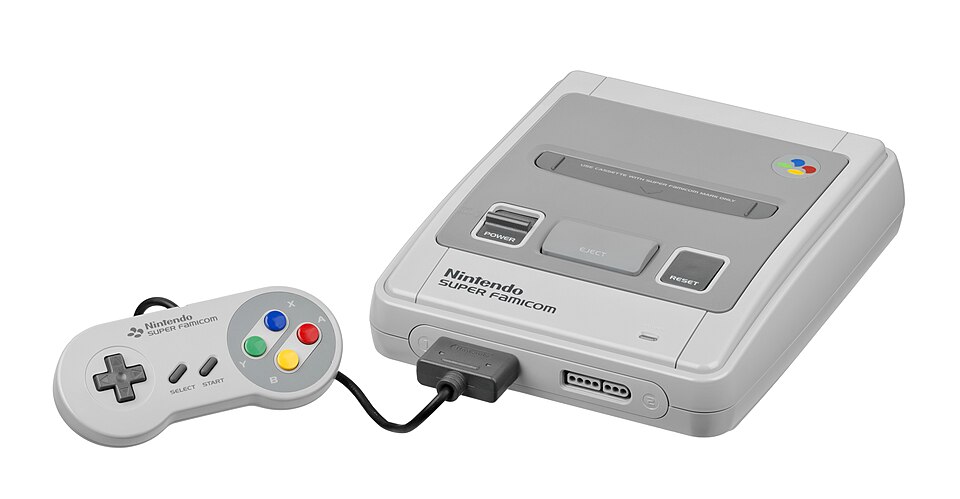The Super Nintendo Entertainment System (SNES): A Deep Dive
The Super Nintendo Entertainment System (SNES), known as the Super Famicom in Japan, is a 16-bit home video game console developed by Nintendo and released in 1990 in Japan and 1991 in North America. It’s widely considered one of the greatest video game consoles ever made, and a pivotal moment in gaming history. Here’s a comprehensive look at the SNES, covering its history, hardware, games, legacy, and more:
1. History & Development
- Following the NES Success: The SNES was Nintendo’s follow-up to the incredibly successful Nintendo Entertainment System (NES). Nintendo aimed to build on that success with more advanced graphics, sound, and gameplay.
- Competition with Sega: The SNES entered a fierce battle with Sega’s Genesis (Mega Drive outside North America). Sega aggressively marketed the Genesis as the “cooler” and “faster” console, targeting an older audience. Nintendo countered with a focus on quality, family-friendly games, and innovative features. This rivalry, often called the “Console Wars,” drove innovation in both systems.
- Technological Advancements: The SNES represented a significant leap in technology over the NES. It boasted a 16-bit processor, allowing for more detailed graphics, richer colors, and more complex sound.
- Release Dates:
- Japan: November 21, 1990 (as Super Famicom)
- North America: August 23, 1991
- Europe & Australia: April 11, 1992
2. Hardware & Technical Specs
- CPU: Ricoh 5A22 (based on the 65C816 processor) – a 16-bit processor.
- RAM: 128 KB
- Video: Custom PPU (Picture Processing Unit) capable of displaying 256 colors on screen simultaneously from a palette of 32,768. It supported Mode 7, a technique that allowed for scaling and rotation of background layers, creating pseudo-3D effects.
- Sound: Sony SPC700 sound chip, providing 8 channels of sound. This was a significant improvement over the NES’s limited sound capabilities.
- Controllers: The SNES controller is iconic, featuring four face buttons (A, B, X, Y), two shoulder buttons (L, R), a directional pad (D-pad), and Start and Select buttons.
- Cartridge Format: The SNES used proprietary cartridges, which contained the game’s ROM (Read-Only Memory).
- Expansion Ports: The console had an expansion port on the bottom, allowing for add-ons like the Super Scope light gun and the SNES Mouse.
3. Key Games & Franchises
The SNES boasts an incredible library of games, many of which are considered classics. Here are some highlights:
- Super Mario World: A launch title and arguably the best 2D Mario game ever made. Introduced Yoshi!
- The Legend of Zelda: A Link to the Past: A groundbreaking action-adventure game that set the standard for the Zelda series.
- Super Metroid: A masterpiece of atmospheric exploration and non-linear gameplay.
- Final Fantasy VI (III in North America initially): A sprawling RPG with a complex story and memorable characters.
- Chrono Trigger: A time-traveling RPG with a unique battle system and multiple endings.
- Street Fighter II Turbo: A hugely popular fighting game that helped popularize the genre.
- Super Castlevania IV: A beautifully designed action-platformer.
- Donkey Kong Country: Revolutionary graphics using pre-rendered 3D models.
- EarthBound: A quirky and beloved RPG with a cult following.
- Star Fox: Early example of 3D polygon graphics on a console (using the Super FX chip).
- Super Mario Kart: The game that launched the Mario Kart franchise.
- Mega Man X: A faster-paced and more action-oriented take on the Mega Man formula.
4. Innovations & Features
- Mode 7: As mentioned earlier, Mode 7 allowed for scaling and rotation of background layers, creating a pseudo-3D effect. This was used to great effect in games like F-Zero and Super Mario Kart.
- Super FX Chip: An add-on chip that allowed the SNES to render 3D polygons. Star Fox was the most famous game to utilize this chip.
- Color Palette: The SNES’s ability to display 256 colors on screen simultaneously was a significant improvement over the NES.
- Sound Quality: The SPC700 sound chip provided a much richer and more complex sound experience than the NES.
- Controller Design: The SNES controller is still considered one of the most comfortable and ergonomic controllers ever made.
5. Legacy & Impact
- Golden Age of Gaming: The SNES is often considered part of the “Golden Age of Gaming,” a period of significant innovation and creativity in the video game industry.
- Influence on Game Design: Many of the games released on the SNES continue to influence game design today.
- Nostalgia & Collectibility: The SNES is a highly sought-after console by collectors and retro gamers. Original consoles and games can be quite valuable.
- Virtual Console & Emulation: SNES games are available on Nintendo’s Virtual Console service (on older Nintendo platforms) and through emulation on various devices.
- SNES Classic Edition: Nintendo released the SNES Classic Edition in 2017, a miniature version of the console pre-loaded with 21 classic games. It was a huge success.
6. Sales & End of Life
- Worldwide Sales: The SNES sold over 49.1 million units worldwide.
- North American Sales: Approximately 26.13 million units.
- Discontinuation: Nintendo officially discontinued the SNES in 1999. However, its legacy continues to live on through its games and influence on the industry.
Where to find more information
- Wikipedia: https://en.wikipedia.org/wiki/Super_Nintendo_Entertainment_System
- IGN: https://www.ign.com/consoles/super-nintendo
- Retro Gamer Magazine: A great source for in-depth articles and features on retro gaming.
In conclusion, the Super Nintendo Entertainment System was a groundbreaking console that helped shape the video game industry. Its impressive hardware, incredible library of games, and lasting legacy make it a true icon of gaming history. It’s a console that continues to be enjoyed and celebrated by gamers of all ages.
